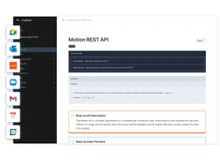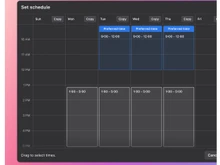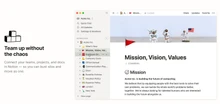Key Differences Between Motion and Notion
- Task Management:
- Motion: Uses AI to automate scheduling and prioritization, adapting tasks based on your calendar. It focuses on time management and task automation.
- Notion: Provides customizable task management through kanban boards, to-do lists, and calendar views. It's more manual and flexible for users who prefer control over task management.
- Project Management:
- Motion: Offers automatic scheduling, project planning, and real-time adjustments for team tasks. It’s ideal for teams that require time-based task management.
- Notion: Allows users to create customizable project management systems, including databases, kanban boards, and calendars, but requires manual setup for more advanced workflows.
- Customization:
- Motion: Limited customization as it's designed for task automation. Focuses on automating workflows rather than deep customization.
- Notion: Highly customizable with templates, databases, and wikis, making it perfect for knowledge management, note-taking, and personalized task management setups.
- Integrations:
- Motion: Integrates with Google Calendar, Outlook, and other productivity tools, focusing on time management and task scheduling.
- Notion: Supports numerous integrations with third-party tools like Google Drive, Slack, and Zapier, allowing users to connect their workflows.
- Pricing:
- Motion: Paid plans starting at $29/month, designed for individuals and teams who need task and time management automation.
- Notion: Free plan available, with paid plans starting at $10/user/month for enhanced features like advanced permissions and more storage.
Conclusion
Motion is ideal for individuals and teams seeking AI-driven task management and time-blocking with automatic scheduling. It's best for users who prefer a structured, time-focused approach to task management.
Notion is perfect for those who need a flexible, customizable workspace for project management, note-taking, and knowledge storage. It’s well-suited for users who want full control over their workflows and organizational systems.


 28 Ratings & 24 Reviews
28 Ratings & 24 Reviews



















